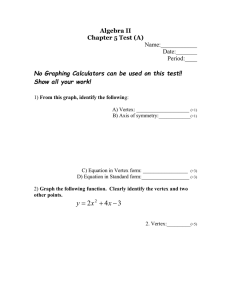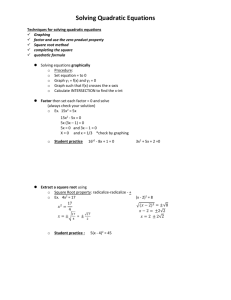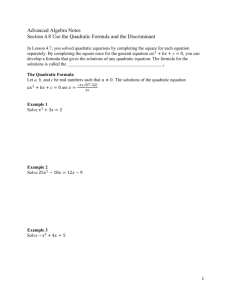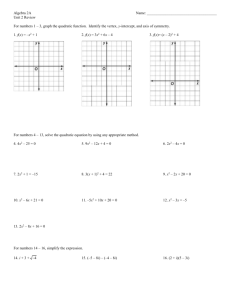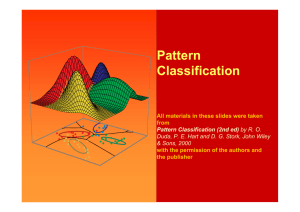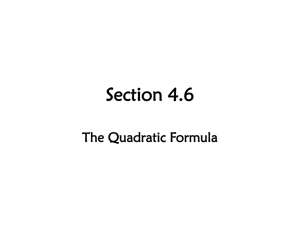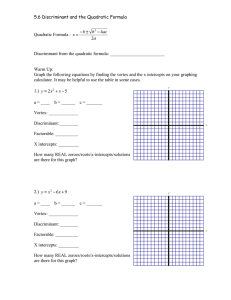Placemat Example
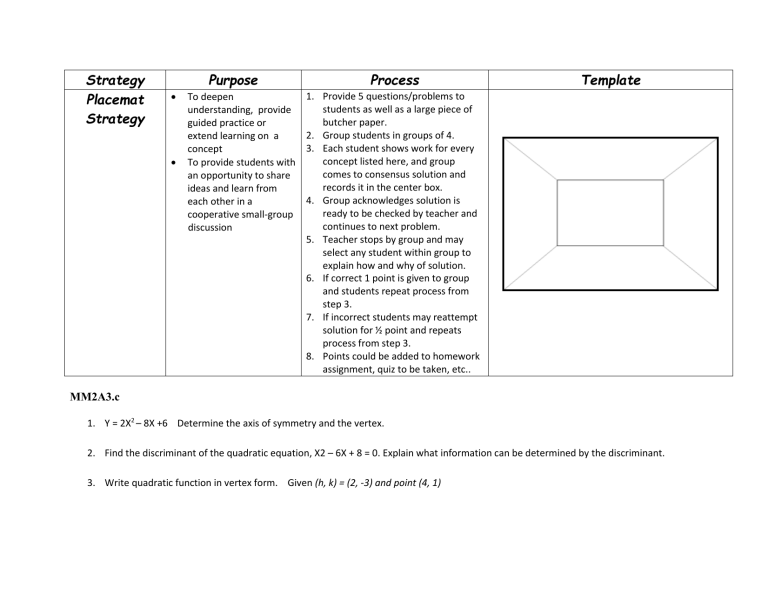
Strategy
Placemat
Strategy
Purpose
To deepen understanding, provide guided practice or extend learning on a concept
To provide students with an opportunity to share ideas and learn from each other in a cooperative small-group
discussion
Process
1.
Provide 5 questions/problems to students as well as a large piece of butcher paper.
2.
Group students in groups of 4.
3.
Each student shows work for every concept listed here, and group comes to consensus solution and records it in the center box.
4.
Group acknowledges solution is ready to be checked by teacher and continues to next problem.
5.
Teacher stops by group and may select any student within group to explain how and why of solution.
6.
If correct 1 point is given to group and students repeat process from step 3.
7.
If incorrect students may reattempt solution for ½ point and repeats process from step 3.
8.
Points could be added to homework assignment, quiz to be taken, etc..
MM2A3.c
1.
Y = 2X 2 – 8X +6 Determine the axis of symmetry and the vertex.
Template
2.
Find the discriminant of the quadratic equation, X2 – 6X + 8 = 0. Explain what information can be determined by the discriminant.
3.
Write quadratic function in vertex form. Given (h, k) = (2, -3) and point (4, 1)
MM2A4.d
4.
Solve quadratic inequality by graphing. X 2 – 6X +5 < 0
5.
Solve inequality algebraically. X
2
+ 3X – 18 ≥ 0
Solutions:
1.
Axis of symmetry is X=2 Vertex is (2, -2) Vertex is minimum or maximum point.
2.
Discriminant is 4. Discriminant can provide the number and type of solutions for the quadratic equation.
Example:
Discriminant is > 0 there are two real solutions
Discriminant is = 0 there is one real solution
Discriminant is < 0 there are two imaginary solutions
3.
Y = (X – 2) 2 – 3. Use Y= a(x – h) 2 + k, vertex is your h and k, use point given for x and y, solve for a, put into Y = a(x–h) 2 + k
4.
1 < X < 5
5.
X ≤ -6 or X ≥ 3

